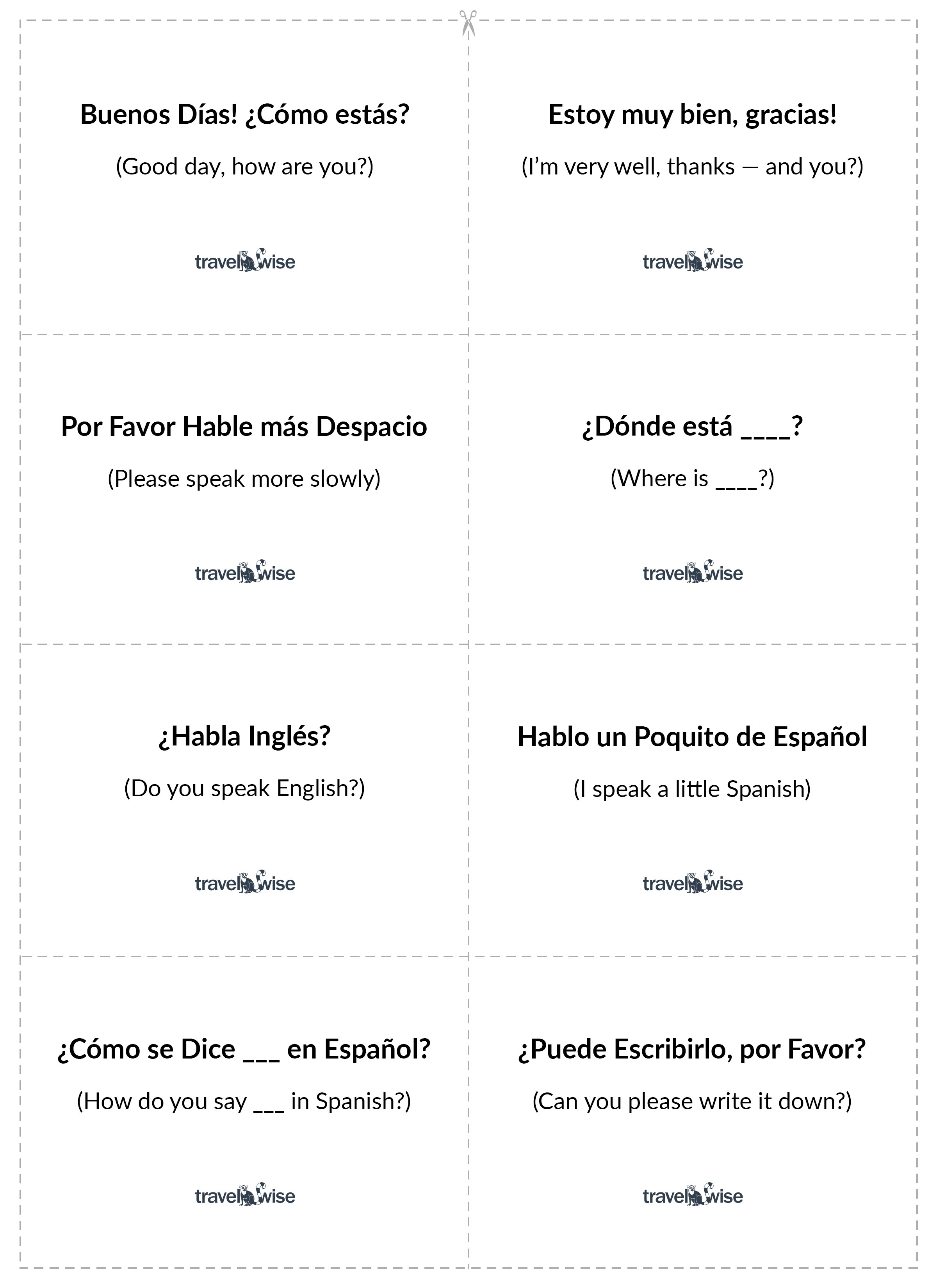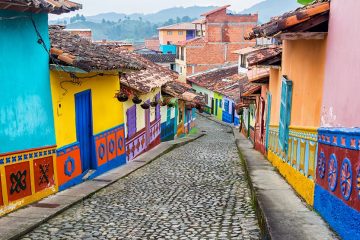The Spanish Phrases I Found Most Useful While Traveling South America
A Little More Than Hola
When I went backpacking in South America, I quickly learned that it is very important to learn at least some Spanish before you visit this part of the world.
Although in many other parts of the world it is easy to get around with just English, that is not the case in South America. Depending on where you go, you might be in a situation where the people you encounter don’t speak English.
You don’t have to be completely fluent, but it’s helpful if you are able to make your basic needs understood to the people you meet and overcome language barriers.
So, if you only have a short time to learn before you travel South America, which words and phrases should you prioritize? First of all, I would recommend you learn the polite words, such as hola (hello), gracias (thank you), por favor (please), perdon (excuse me) and lo siento (I’m sorry).
You’ll probably use these five words every single day.
Your next priority should be learning your numbers. You will need to ask the price of hotel rooms and souvenirs, or how many hours long the bus ride is, or tell the tour guide how many people are booking on the trip — so start studying your numbers now.
It is also helpful to have some food vocabulary, so you can shop in the supermarket and order a meal in a restaurant. If you are traveling with dietary restrictions, you’ll need to learn how to communicate that to servers as well.
As well as these basics, here are some other important phrases that I used a lot while in South America.
Buenos Días! ¿Cómo estás?
You’ll probably be greeted with this friendly phrase often, which means “good day, how are you?” (Or, if it is afternoon you might hear “buenas tardes.”)
You can respond with “estoy muy bien, gracias!” which means “I’m very well, thanks — and you?”
¿Dónde está ____?
This simply means “where is ____.” You can use it to ask the whereabouts of anything, from the toilet to the bus station to the supermarket.
If you find yourself turned around or get lost while traveling and don’t know the word, you could even pull up a photo on your phone or in your guidebook and point to it.
Hablo un Poquito de Español
This phrase means “I speak a little Spanish” and it is what you can say when someone asks you if you “habla Español.” It’s helpful to say “a little” (poquito) because it explains to them that you are still learning the language and that they shouldn’t speak too quickly or use complicated phrases.
Por Favor Hable más Despacio
I found that often someone would say something to me and I would almost understand it, but they were speaking too fast for me to catch all of the words. So, I would say this phrase, which means “please speak more slowly.”
When they repeated themselves slowly, I would often be able to figure out what they were trying to say.
¿Puede Escribirlo, por Favor?
Another great phrase to use if you are not understanding someone, this means “can you write it down, please?” For example, if the hotel owner is telling you the price of the room and you can’t tell what number he is saying, asking him to write it down will remove all confusion.
¿Habla Inglés?
This is what you can ask if you want to know if someone speaks English. If they work in the tourism industry in most countries in South America, they might speak at least basic English.
If you are in a smaller village off the beaten track, they might not!
¿Cómo se Dice ___ en Español?
This is a handy phrase to use if you don’t remember the Spanish word for something. You can just point to it and ask “how do you say ___ in Spanish?”
Try to do this as often as you get the chance, because it will help you grow your vocabulary.
When exploring somewhere new, do these things to ensure you get a full experience of your destination from cuisine to culture.
¿Tienes ____?
This is a very helpful phrase to know. It simply means “do you have?”
It is probably one of the most common phrases that I used during my time in South America. At the fruit stall I would ask “¿tienes naranjas?”
At the cafe I would ask “¿tienes WiFi?” When booking a hotel I would ask “¿tienes una habitación para dos personas?”
It’s so easy to remember and so versatile!
¿Cuánto Cuesta Esto?
When the shopkeeper says “si, tengo naranjas” (yes, I have oranges) your next move is going to be to ask how much they cost. This is the phrase you use to ask that question.
Remember, in many open-air markets it’s completely fine to haggle on the price, so you don’t have to pay the first number the fruit stall owner gives you!
These are just a few of the Spanish words and phrases I found the most useful when I traveled in South America. Communicating in another language is very challenging, but with a little practice and patience (try using a language learning app to help you) you will be able to make yourself understood and find your way around South America so you can enjoy this exciting part of the world.
Print flashcards to help you learn these Spanish phrases!








